Strategic Planning for War Starts With Today's Trends And Tomorrow's Possibilities
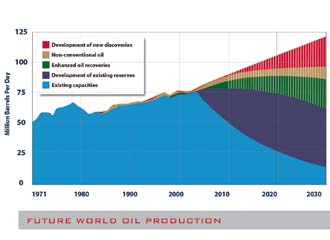 |
The U.S. Joint Forces Command (JFCOM) has released its Joint Operating Environment (JOE) 2010 report. The document identifies trends, threats, world context and more for joint force leaders to consider in their future planning. One item that could have an effect on how forces |
The U.S. Joint Forces Command has released a new Joint Operating Environment to address changes in trends and situations that will influence joint forces in their missions of domestic and world security. This release includes several topic areas such as the global economic situation not covered in the 2008 version. It also expands on areas that authors felt needed more attention such as cyberthreats.
The Joint Operating Environment (JOE) was published in February of this year. The Joint Forces Command (JFCOM) initially put the document into the hands of key personnel it believed deserved a first look and made it available to the public via its Web site in March. Members of the command’s Joint Futures Group played the lead role in creating the document, working with experts and intellectuals as necessary to provide the best information to readers. According to JOE wording, it is “intended to inform joint concept development and experimentation throughout the [Defense Department]. It provides a perspective on future trends, shocks, contexts and implications for future joint force commanders and other leaders and professionals in the national security field. This document is speculative in nature and does not suppose to predict what will happen in the next 25 years. Rather, it is intended to serve as a starting point for discussions about the future security environment at the operational level of war.”
Maj. Gen. David Edgington, USAF, JFCOM chief of staff, explains that, “Part of the role of any strategic-level commander is to take a look at the future.” Because his command has no regional responsibility, it is trying to help enable force development and to aid joint force commanders in regional commands as they look at the future. The general emphasizes that the report is not intended to give an exact prediction of future events, but to lay out possibilities and trends currently identified that can help prepare today’s force and tomorrow’s budget as well as move long-term planning in the right direction.
The JOE has five major parts in addition to the introduction and concluding thoughts sections: The Constants; Trends Influencing World Security; The Contextual World; The Implications for the Joint Forces; and Future Opportunities. Each of these divisions has smaller topic areas that address specific issues. In addition to covering the global economic situation, other new foci include radical ideologies and the proliferation of weapons of mass destruction. Areas that have expanded coverage compared to the 2008 version include space operations and science and technology developments in addition to cyberthreats. “We see those as having enormous applications,” Gen. Edgington says.
JFCOM determined to make those changes based on world events such as the Georgia-Russia altercation in 2008 that involved a cyber component. Other dangers that influenced an expansion of the cyberthreats area included thumb drives that contained hazards for Defense Department networks. Gen. Edgington explains that, “[Once] we started putting two and two together,” those trends were significant. In this new iteration, authors wanted to ensure they covered topics in adequate depth to provide strategic thinkers better preparation for the challenge.
Identifying and responding to changes in the context and threats of joint forces are the catalysts for releasing a new JOE. The document has no set schedule or mandatory update cycles. When document preparers determine they have enough of what Gen. James N. Mattis, USMC, JFCOM commander, calls “sufficiently different understanding to make a new edition worthwhile,” they will publish one. This change in understanding could mean including new trends as well as reducing the importance of former areas of impact. Gen. Edgington says, “We don’t want to be people playing Chicken Little out there and saying the sky is falling.” He emphasizes that if the command determines a threat or trend no longer is valid, it is willing to remove it from the JOE.
JFCOM officials use their own judgment, not set metrics and formulas, to determine when to publish an updated version. They originally contemplated a 2009 release, but during the compilation of that, they gained awareness of more cyberattacks and weapons of mass destruction. Then, they learned more about space operations so they waited until 2010 to publish more comprehensively. Gen. Edgington says release dates are all about establishing the right timing. “We don’t want someone referring to this in 2013 ... and thinking ‘Whew, this is [old]. It’s of no consequence anymore,’” he explains, adding that the creators want people to know they have something of value.
According to the general, the JOE is “a living and breathing environment,” and the command intends to update it continuously. Part of the update process comes from the dialogue spurred by the information. JFCOM not only encourages commanders and others to use the JOE in their planning, but also to share information with JFCOM. Gen. Edgington explains that the command wants to hear from people through its blog (USJFCOMLive), through letters or by other means. All comments will be considered, though not to the same extent. The general shares that the 2008 version inspired a significant amount of dialogue and that approximately 1 million copies were distributed in various formats.
Though Gen. Edgington says the report likely will not surprise people, there are areas that caused him to say, “‘Yeah, I should be thinking more about that.’ That’s really what we hope to spur.” Who those thought-provoked people might be is a tougher question to answer. JFCOM wrote the JOE with the strategic commander in mind, but the implications are far reaching. The chief of staff explains that this document cannot force people to change what they do, but he certainly hopes that will be an ancillary effect. “If we have leaders, young people, graduating from college who don’t quite grasp the implication of the economic downturn and what it means to their futures, if this brings that home, score a touchdown for us,” he says.
 |
The JOE includes discussion on the effects of the economic downturn and global financial crisis and how those could impact the joint force. Discussion of these topics also has a farther-reaching impact to people such as young leaders who might not yet understand what this situation means for their futures. |
The most valuable place for leaders to look for ideas, from Gen. Edgington’s JFCOM perspective, is section four, “The Implications for the Joint Forces.” This portion of the JOE addresses war in the 21st century, preparing for war and the conduct of military operations in the 21st century. These topics, according to the general, really are the thrust for the intended audience. However, JFCOM understands that other readers might make better use of different sections. “We’re not out to please everyone,” he says. “Section four is the most important to us. That’s why we wrote this.”
Nonetheless, looking at war and joint forces in a vacuum is not the most effective way to create security. “There are long-term implications to everything,” Gen. Edgington states. He uses his own career as an example. Early on, everything appeared to him as a military challenge. As he has matured, he has seen that the global security challenges are far beyond military engagement; a whole-of-government approach will better equip joint forces moving forward. Other departments can advise the military on cultural differences, political struggles and economic challenges. The general says that looking across demographics, economics and major product lines is key to understanding implications. Military power is one of those forces, but it is not the correct path for all challenges and potentially can be avoided in some circumstances.
The JOE’s second section includes many issues facing the world including supplies such as fuel, food and water as well as population trends and economic situations. Using this information, leaders of the joint force can prepare more effectively for the world in which troops do and likely will operate.
Gen. Edgington says JFCOM is focused on helping the joint warfighters today, “but we also want to help [them] be more prepared for future wars as well.” He explains the importance of encouraging strategic dialogue and promoting intellectual rigor in how the military formulates its forces for the future. Because of the nature of today’s battlefield, and the battlefield of the foreseeable future, “joint operations” applies to almost all military operations. Though one service branch might have the lead in certain missions or areas, the Defense Department’s organization for training and equipping forces is done at the joint combatant command level. The general says that, speaking as a full joint advocate at JFCOM, everything the military does will be addressed in the joint perspective.
These military missions include fighting and winning wars as well as deterring conflicts. According to the JOE, “While the most important mission of the American military has been to fight and win the nation’s wars, the ability of
The document explains that the roles and mission of joint forces will include protection of the homeland, maintenance of the global commons, deterrence of potential enemies, reassurance to partners and allies, and fighting and winning global conflicts. “Such challenges are by themselves daunting enough, but they will occur in a period characterized by radical technological, strategic and economic change, all of which will add to the complexities of the international environment and the use of military force.
The JOE states that joint force commanders, staffs and subordinates need a clear understanding of the strategic and political goals of their operations as well as of coalition objectives. The section of the document covering the contextual world addresses cooperation and competition among conventional forces as well as the impact specific countries and regions could have on joint forces. Other topics covered include technology, radical ideology and the threats of unconventional powers.
The document states that, “The forms of future war will each present peculiar and intractable challenges to joint forces ... there is every likelihood that there will be few lines of delineation between one form of conflict and another. Even in a regular war, potential opponents, engaged in a life and death struggle with the
To prepare for the future battlefield in all its elements, joint forces require access to disruptive technologies. In its fifth section, “Future Opportunities,” the JOE addresses this need. It calls for true changes to the acquisition process, stating that, “There have been justified calls for acquisition reform for decades; and while a number of groups have produced clear, forthright, and intelligent studies, little actual reform has taken place. This is no longer a bureaucratic issue: it is having strategic effects. Given the potential for disruptive technologies in the near future, the crucial issue will not be whether the United States possesses such technologies, but how affordably, how quickly and how effectively joint forces can incorporate those technologies not only into their concepts, doctrine and approach to war, but actually into the units and commands that will have to use those technologies on future battlefields. Without a thorough and coherent reform of the acquisition processes, there is the considerable prospect an opponent could incorporate technological advances more affordably, quickly and effectively with serious implications for future joint forces.”
Also addressed in the fifth section are the critical importance of military education, the need for personnel system reform and simulation requirements.
WEB RESOURCES
The Joint Operating Environment 2010: http://www.jfcom.mil/newslink/storyarchive/2010/JOE_2010_o.pdf
Maj. Gen. David Edgington, USAF: www.jfcom.mil/about/edgington.html
JOE on JFCOMLive blog: http://usjfcom.dodlive.mil/2010/03/15/introducing-the-joe-for-2010
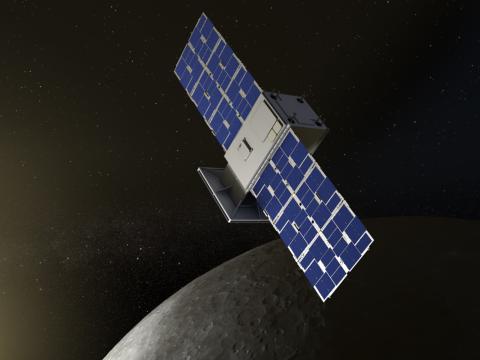
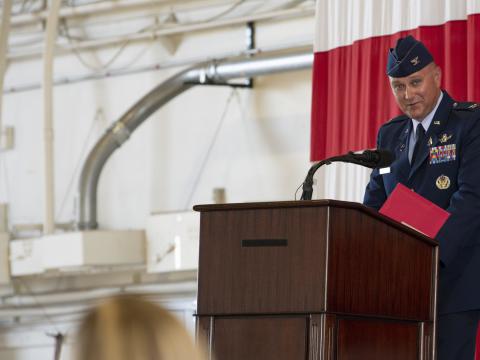

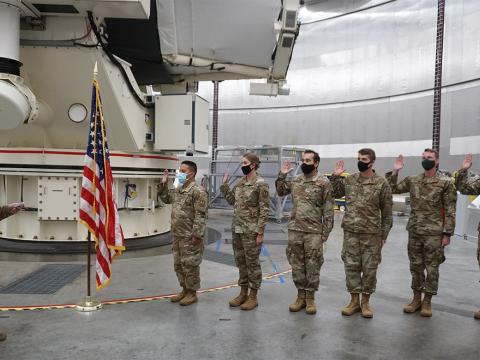
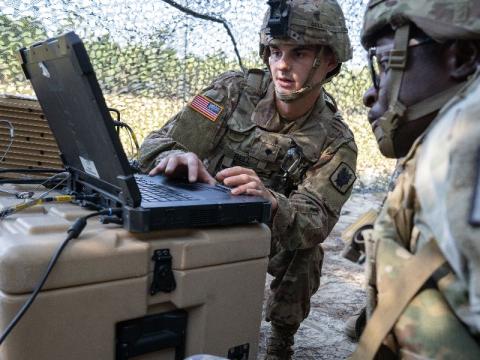
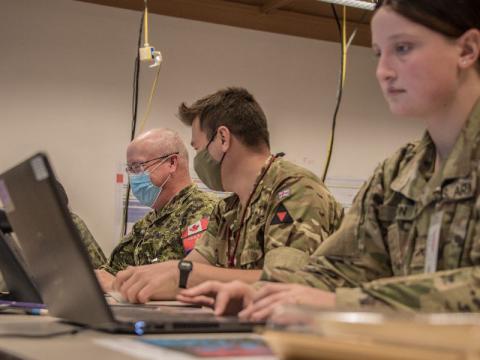
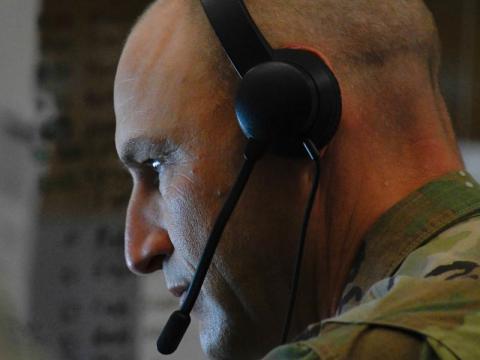
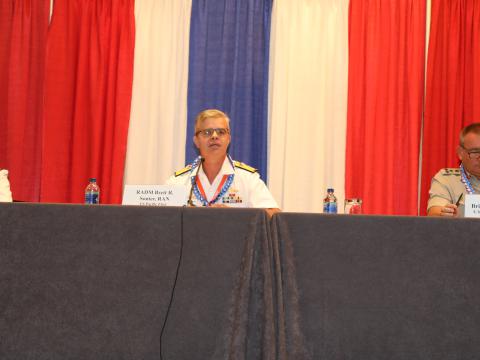

Comments